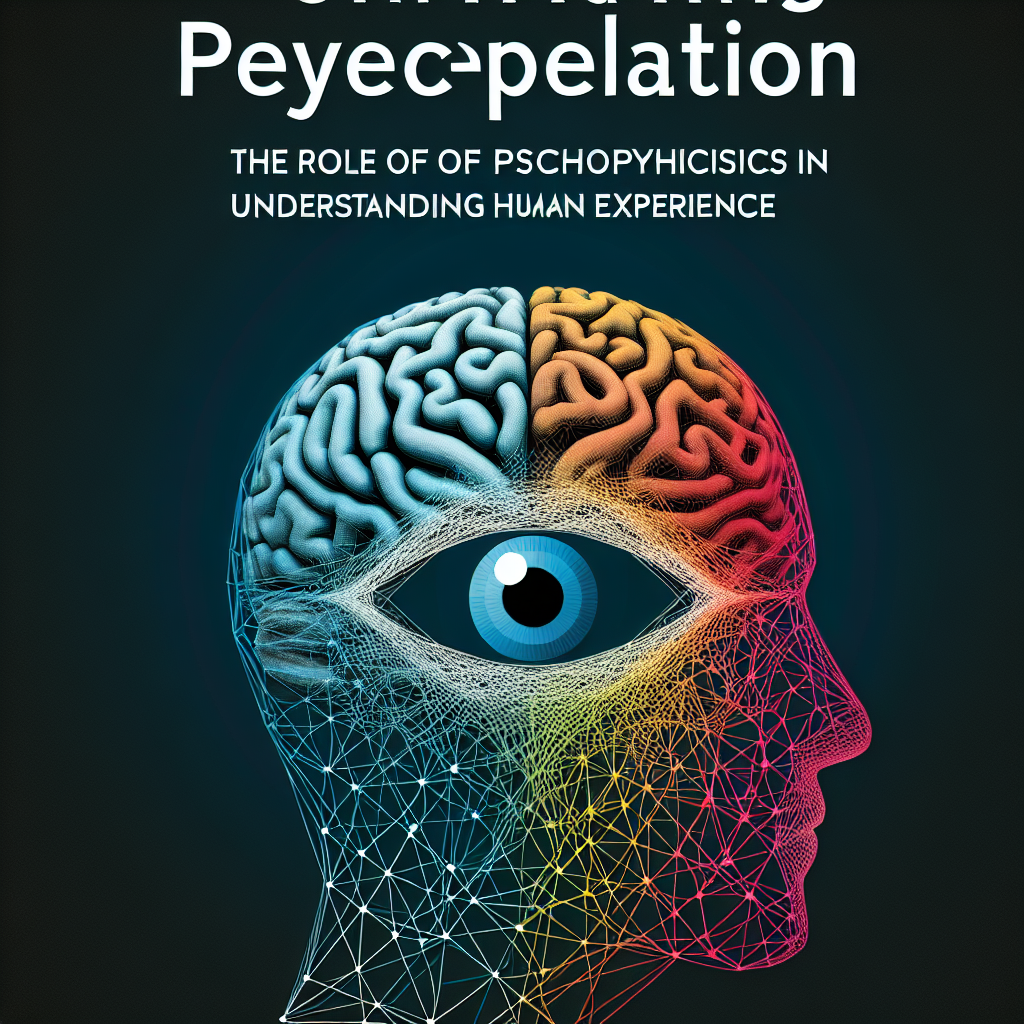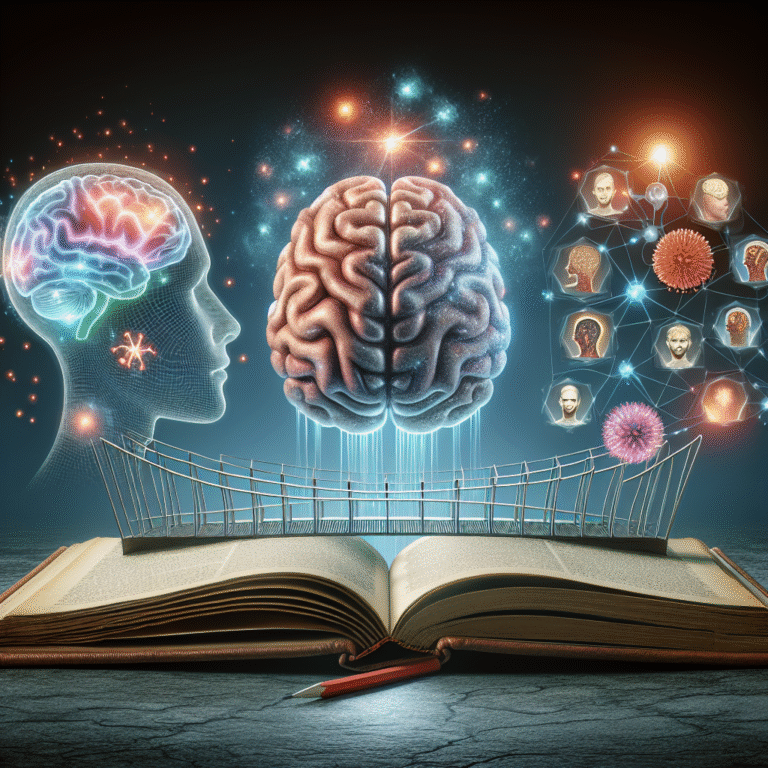
Introduction
In a world saturated with stimuli—from the hum of city life to the subtle shifts of nature—how do we interpret our experiences? Understanding perception, the intricate process through which we interpret sensory information, is crucial for both our daily lives and the broader tapestry of human experience. Unraveling perception touches on aspects of psychology, neuroscience, and even philosophy, but one field stands out in its ability to bridge the gap between sensory input and our consciousness: psychophysics.
At its core, psychophysics examines the relationship between physical stimuli and the sensations and perceptions they evoke. By dissecting the components of human experience, it reveals the fascinating complexities of how we interact with our environment. This article takes you on an enlightening journey into the profound role of psychophysics in unraveling human perception, showcasing its applications and implications in everyday life.
The Foundations of Psychophysics
What is Psychophysics?
Psychophysics, a term coined by Gustav Fechner in the 19th century, involves the quantitative study of the relationship between physical stimuli and the sensations they produce. By systematically measuring how changes in stimuli affect our perceptions, psychophysicists provide us with valuable insights into the workings of the human mind.
Key Concepts in Psychophysics
- Absolute Threshold: The minimum intensity of a stimulus that can be detected 50% of the time.
- Difference Threshold: The smallest detectable difference between two stimuli, also known as the just noticeable difference (JND).
- Weber’s Law: A principle that states the perceived change in a stimulus is proportional to the original stimulus’s intensity.
Why Psychophysics Matters
Understanding the foundations of psychophysics is essential for unraveling perception because it allows us to quantify subjective experiences. From designing effective marketing strategies to enhancing user interface design in technology, insights from psychophysics can transform industries.
Case Study: Music and Emotion
Consider the relationship between music and emotion—an area where psychophysics illuminates our understanding of perception. Researchers have found that specific musical attributes, like tempo and harmony, can elicit emotional reactions. By quantifying these changes, we can understand how variations in sound can adjust our mood and perception of reality.
The Role of Psychophysics in Multiple Senses
Vision: Seeing Beyond the Surface
Visual perception is one of the most studied aspects of psychophysics. The human eye is capable of detecting a wide range of colors and intensities, and psychophysics helps quantify these experiences.
Visual Thresholds
- Color Perception: Understanding how color discrimination varies across different lighting conditions can inform everything from art design to advertising.
Table 1: Color Discrimination Thresholds
| Color | Threshold (nm) |
|---|---|
| Red | 620-750 |
| Green | 495-570 |
| Blue | 450-495 |
Hearing: The Symphony of Sounds
Auditory perception explores how we interpret sound waves of varying frequencies and amplitudes through psychophysical principles.
Loudness and Frequency
- Fletcher-Munson Curves: These curves illustrate how the sensitivity of human hearing varies with loudness and frequency.
Chart 1: Fletcher-Munson Curves
[Insert visual chart depicting Fletcher-Munson curves showcasing how human sensitivity to sound varies across different decibel levels.]
Case Study: Hearing Aids Development
Insights from auditory psychophysics have directly impacted the design of hearing aids, allowing better amplification and clarity of sound tailored to individual patient needs.
Taste and Smell: The Sensory Duo
Taste and smell are deeply intertwined senses that are crucial to our perception of flavor. Psychophysical research has shown that subtle changes in odor or taste concentrations can significantly influence our overall experience.
Flavor Perception
- Sensation vs. Perception: Understanding the psychophysics behind flavor perception can aid in creating better food products.
Touch: The Subtle Art of Tactile Perception
Tactile perception is another crucial element in understanding human experience. It encompasses everything from simple touch to complex sensations like pain and texture.
Application in Design
For example, user experience design incorporates findings from psychophysics to create products that are intuitive and easy to use by understanding how people perceive texture, weight, and resistance.
The Intersection of Psychophysics and Technology
Augmented Reality and Virtual Reality
As technology progresses, the applications of psychophysics become even more impactful. Virtual and augmented reality systems rely heavily on our sensory perception, and understanding these processes enhances user experience.
Case Study: Enhancing VR Experiences
Researchers use psychophysical principles to create more responsive environments in virtual reality, making them almost indistinguishable from real life.
Marketing and Advertising
Advertisers must grasp human perception to craft messages that resonate deeply with consumers. Unraveling perception through psychophysical principles enables marketers to fine-tune their campaigns for maximum impact.
The Effect of Color Psychology in Marketing
Understanding the emotional responses elicited by different colors can lead to more effective branding strategies.
Chart 2: Color Psychology in Marketing
| Color | Associated Emotion | Example Use |
|---|---|---|
| Red | Excitement/Passion | Clearance Sales |
| Blue | Trust/Calm | Financial Services |
| Green | Growth/Health | Organic Products |
Future Directions in Psychophysics
Interdisciplinary Approaches
The future of psychophysics involves collaboration across disciplines—melding psychology, neuroscience, and even philosophy—to create a more holistic understanding of perception.
Cognitive Neuroscience
Advancements in cognitive neuroscience have allowed researchers to examine how brain processes relate to perceptual experiences, providing deeper insights into the brain’s role in interpreting stimuli.
Conclusion
Unraveling perception through the lens of psychophysics reveals intricate dynamics within our sensory experiences. This exploration not only enhances our understanding of human behavior but also guides applications across various fields, from marketing to technology.
Revealing the science behind our senses empowers us to harness these insights, paving the way for innovations that respect and utilize our perception of the world around us. As we continue to explore the depths of our sensory experiences, we take a step closer to understanding the human condition in its entirety, enriching both personal and societal narratives.
FAQs
1. What exactly is psychophysics?
Psychophysics is the study of how physical stimuli relate to our sensory perceptions, allowing for a deeper understanding of how we interpret the world.
2. How does psychophysics influence technology?
Insights from psychophysics guide the design of user interfaces and virtual environments to enhance user experience by aligning technology with human perception.
3. Can psychophysics help in therapy?
Yes, insights from psychophysics can aid therapeutic approaches, particularly in understanding sensory processing issues, leading to better coping strategies.
4. What role does psychophysics play in marketing?
Psychophysical principles help marketers design advertisements that resonate based on color psychology and sensory engagement, optimizing emotional appeal.
5. How is psychophysics related to neuroscience?
Psychophysics provides a framework for exploring how sensory information is processed in the brain, bridging the gap between subjective experience and neurological function.
Exploring the vast landscape of human perception through psychophysics not only enriches our understanding of ourselves but also offers vital insights that can be applied across numerous fields, shaping a better future for all.

















